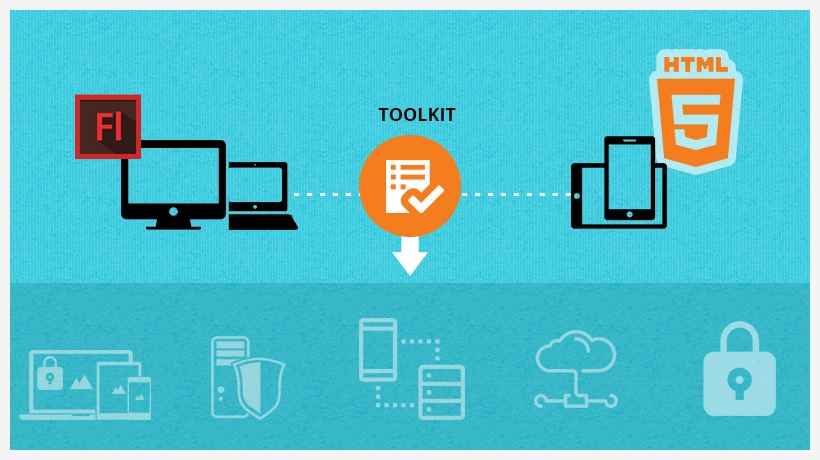Is HTML5 Ready For The eLearning Industry?
The proliferation of mobile devices with their HTML5 browsers requires that we shift to it – and better do it quickly! The lack of Adobe Flash support for iPhone and iPad, as well as the ever-expanding use of HTML5 as an open source alternative for Apple products, have enhanced the need for this change. Many major eLearning authoring tool companies are already working on delivering HTML5 output, as this new language appears to be one of the best approaches for eLearning content on mobile devices. But is HTML5 ready to assume this demanding role?
“New open standards created in the mobile era, such as HTML5, will win on mobile devices”: Steve Jobs has foreseen it and we cannot stop wondering whether he will be proven right at the end of the day.
Why So Much Talk About HTML5?
HTML5 is bringing about another small revolution for web browsers such as Microsoft Internet Explorer, Apple Safari, Google Chrome, and Mozilla Firefox. Its principal characteristic is that it is built around WebApps, enabling features like offline storage or the ability to handle data even when the application is no longer connected to the Internet. Its main advantage is that, unlike Flash -its biggest rival, HTML5 does not require a vendor-supplied plug-in for the web browser to interpret the code. Smartphones and tablets are among the new devices that have implemented this new technology. Moreover, HTML5 content can be organized in a way that can be easier interpreted by search engines and screen readers. As a result, HTML5 makes it faster, easier, and more economical to deploy web-based applications that perform like software and work across all platforms, bypassing the need to develop individual mobile applications for multiple devices and operating systems.
4 Important Drawbacks Of HTML5 Vs Flash
However, there are always two sides to every coin so HTML5 has its drawbacks, the most important of which are listed below.
- Not fully supported by all browsers.
First of all, it cannot be fully supported by all browsers. The intent of the HTML5 initiative is to be compatible with older browsers, and this has been achieved to some extent, but not entirely. Although most major browsers now have complete HTML5 support, including the most recent versions of Internet Explorer, some legacy IE versions still do not support it. For this reason, many eLearning developers prefer to deliver their content using HTML4 instead. - Cross platform/browser compatibility.
In other words, applications that were developed on one browser may not be always compatible with other browsers. On the contrary, Flash, as a plug-in, has the ability to run on all browsers, wiping out similar compatibility issues. - Limited graphics and animations delivery.
Another reason to insist on Flash is graphics and animations. The HTML5 alternative, as it appears, is not appropriate for the creation of highly interactive animations and quality graphics. Due to the lack of efficient tools, developers using HTML5 would need hours to code animations using Javascript or CSS – a task that could be much easier with Flash professional in just a few minutes. - Lack of audio/video support.
While Flash supports FLV format that is not browser-dependent, HTML5 does not officially support any audio/video format. The HTML5 alternative is the introduction of audio and video tags that allow us to include media that previously required a plug-in. However, Flash provides more mature and sophisticated solutions when it comes to sound capabilities.
To HTML5 or not to HTML5?
All the above considered, it is no wonder that many eLearning professionals still doubt about whether HTML5 is ready to be fully used for eLearning. Even though it is a great medium for the deployment of eLearning courses across various platforms, it has some important limitations that keep eLearning professionals from fully implementing it. The truth is that HTML5 is still a work in progress and will not be finalized for another couple of years. For the time being, Flash is the most mature solution since it has been fully developed since its first release in 1996. However, HTML5 is an emerging technology with undeniably strong potential for the development of highly interactive courses, and appears to be the only viable alternative for web development. Hopefully, it will be ready by the end of 2014 and its shortcomings will be dealt with in the near future.
You may also find useful Is the migration of Flash eLearning courses to HTML5 becoming a reality?








